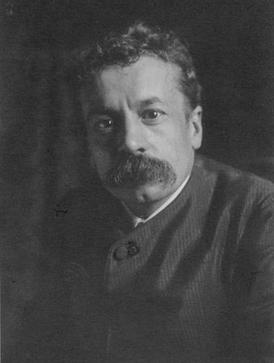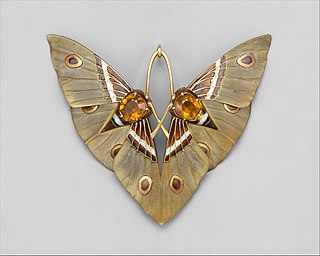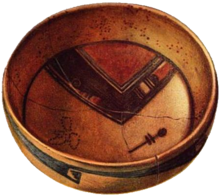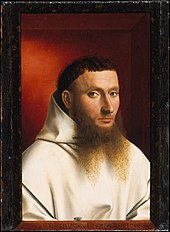
Entomology is the scientific study of insects, a branch of zoology. In the past the term insect was less specific, and historically the definition of entomology would also include the study of animals in other arthropod groups, such as arachnids, myriapods, and crustaceans. This wider meaning may still be encountered in informal use.

René Jules Lalique was a French jeweller, medallist, and glass designer known for his creations of glass art, perfume bottles, vases, jewellery, chandeliers, clocks, and automobile hood ornaments.

The Pterygota are a subclass of insects that includes all winged insects and the orders that are secondarily wingless.

Grasshoppers are a group of insects belonging to the suborder Caelifera. They are among what is possibly the most ancient living group of chewing herbivorous insects, dating back to the early Triassic around 250 million years ago.

Rachel Ruysch was a Dutch still-life painter from the Northern Netherlands. She specialized in flowers, inventing her own style and achieving international fame in her lifetime. Due to a long and successful career that spanned over six decades, she became the best documented woman painter of the Dutch Golden Age.

The Ant and the Grasshopper, alternatively titled The Grasshopper and the Ant, is one of Aesop's Fables, numbered 373 in the Perry Index. The fable describes how a hungry grasshopper begs for food from an ant when winter comes and is refused. The situation sums up moral lessons about the virtues of hard work and planning for the future.

Maria van Oosterwijck, also spelled Oosterwyck, (1630–1693) was a Dutch Golden Age painter, specializing in richly detailed flower paintings and other still lifes.

Insect wings are adult outgrowths of the insect exoskeleton that enable insects to fly. They are found on the second and third thoracic segments, and the two pairs are often referred to as the forewings and hindwings, respectively, though a few insects lack hindwings, even rudiments. The wings are strengthened by a number of longitudinal veins, which often have cross-connections that form closed "cells" in the membrane. The patterns resulting from the fusion and cross-connection of the wing veins are often diagnostic for different evolutionary lineages and can be used for identification to the family or even genus level in many orders of insects.

Insect mandibles are a pair of appendages near the insect's mouth, and the most anterior of the three pairs of oral appendages. Their function is typically to grasp, crush, or cut the insect's food, or to defend against predators or rivals. Insect mandibles, which appear to be evolutionarily derived from legs, move in the horizontal plane unlike those of vertebrates, which appear to be derived from gill arches and move vertically.

The Reading Public Museum is a museum in Reading, Pennsylvania located in the 18th Ward, along the Wyomissing Creek. The museum's permanent collection mainly focuses on art, science, and civilization and contains over 280,000 objects. It also has a planetarium and a 25-acre (100,000 m2) arboretum.

Beetlewing, or beetlewing art, is an ancient craft technique using iridescent beetle wings practiced traditionally in Thailand, Myanmar, India, China and Japan. Notable beetlewing garments include Lady Curzon's peacock dress (1903) and a costume dress worn by the actress Ellen Terry as Lady Macbeth, depicted in the painting Ellen Terry as Lady Macbeth (1889).

Annemieke Mein is a Dutch-born Australian textile artist who specialises in depicting wildlife. She was the first textile artist to be member of Wildlife Art Society of Australasia and the Australian Guild of Realist Artists. The subjects of her sculpted textiles are birds, frogs, gum and wattle blossoms, and insects such as moths, dragonflies, wasps and grasshoppers. Her fondness for insects and her sympathetic images, often greatly enlarged and showing normally invisible colours and textures, have revealed new aspects of the everyday world.
In the 10th edition of Systema Naturae of 1758–1759, Carl Linnaeus classified the arthropods, including insects, arachnids and crustaceans, among his class "Insecta". He described the Insecta as:
A very numerous and various class consisting of small animals, breathing through lateral spiracles, armed on all sides with a bony skin, or covered with hair; furnished with many feet, and moveable antennae, which project from the head, and are the probable instruments of sensation.

Human interactions with insects include both a wide variety of uses, whether practical such as for food, textiles, and dyestuffs, or symbolic, as in art, music, and literature, and negative interactions including damage to crops and extensive efforts to control insect pests.

Insects have appeared in mythology around the world from ancient times. Among the insect groups featuring in myths are the bee, fly, butterfly, cicada, dragonfly, praying mantis and scarab beetle.

Insects have appeared in literature from classical times to the present day, an aspect of their role in culture more generally. Insects represent both positive qualities like cooperation and hard work, and negative ones like greed.

Insect names have appeared in music from Rimsky-Korsakov's "Flight of the Bumblebee" to such popular songs as "Blue-tailed Fly" and the folk song La Cucaracha which is about a cockroach. Insect groups mentioned include bees, ants, flies and the various singing insects such as cicadas, crickets, and beetles, while other songs refer to bugs in general.

Lucien Gaillard was a French goldsmith and jeweller, who worked in the art nouveau style.

Roses, Convolvulus, Poppies and Other Flowers in an Urn on a Stone Ledge (1688) is an oil on canvas painting by the Dutch painter Rachel Ruysch. It is an example of Dutch Golden Age painting and is now in the collection of the National Museum of Women in the Arts, in Washington, D.C..

Within Japanese culture, insects have occupied an important role as aesthetic, allegorical, and symbolic objects. In addition, insects have had a historical importance within the context of the culture and art of Japan.

























